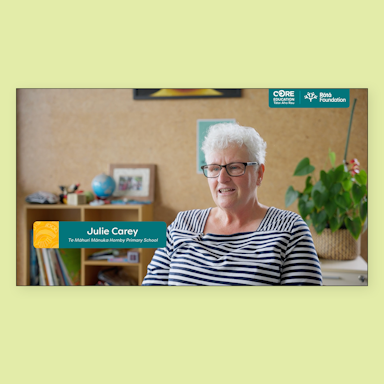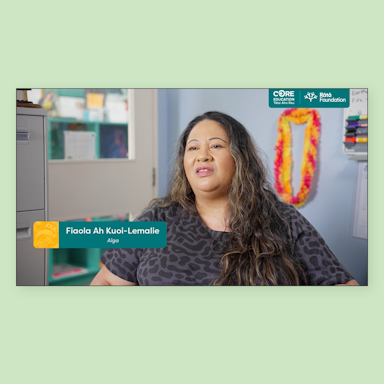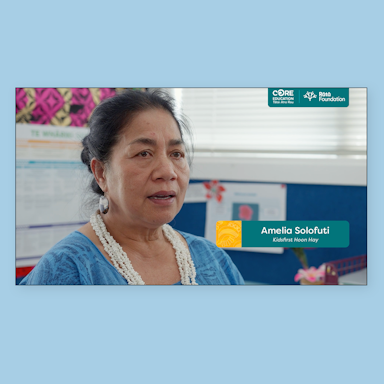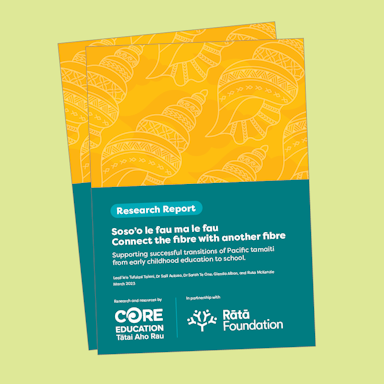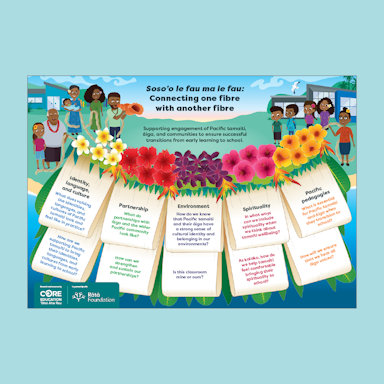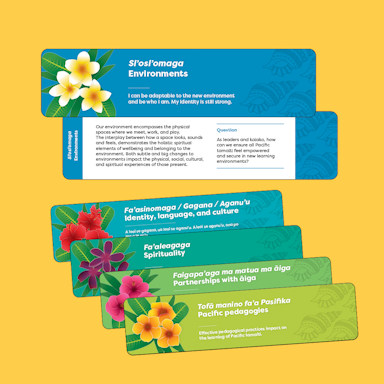Pacific tamaiti - transitions to school from early years.
Supporting successful transitions of Pacific tamaiti from early childhood education to school.
Soso’o le fau ma le fau: Connect the fibre with another fibre
What was the project about?
We want our children to know who they are, where they are from and how they belong. We aspire for our children to thrive as citizens who actively contribute to our increasingly diverse society.
This collaborative participatory action research project by Tātai Aho Rau Core Education, in partnership with Rātā Foundation, focuses on our Pacific āiga (family). This 21-month long project worked with four early learning services (ELS) and three schools in Canterbury.
Learning about how to support successful transitions for Pacific tamaiti (children) from early childhood education (ECE) to school takes time, attention, and personalised approaches. A successful transition makes a huge difference for tamaiti and their āiga, by giving them a sense of belonging, wellbeing, and engagement in their new learning community.
The research report and resources allow educators and teams to dive more deeply into the project, findings, and recommendations.
Strengthening identities, languages, and cultures of tamaiti through transitions between early learning services and schools will activate success and enhance positive outcomes for Pacific learners in education.
-
The whakapapa of the project
Pacific educational success is at the heart of all Pacific āiga and community aspirations. One of the main reasons for leaving their Pacific shores and fanua (lands) was in search of a better future for their āiga through education. This project aims to provide educators with suggestions and recommendations for strategies and practices that support Pacific tamaiti to transition successfully.
This project adds to the body of knowledge focused on transitions to school. In 2018, Tātai Aho Rau Core Education was invited by the Rātā Foundation to submit an action research proposal focusing on transitions to school designed to effect systemic change in this important stage of a child’s learning journey – to ensure life-long learning pathways for all tamaiti.
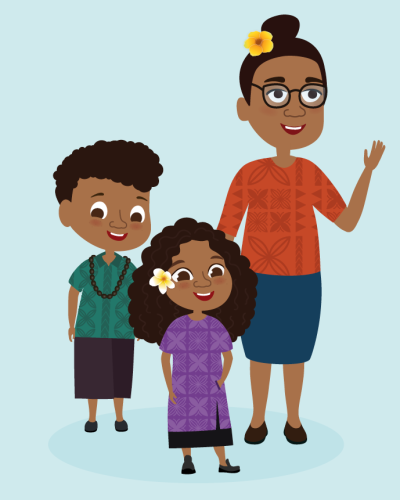
-
The meaning of ‘Soso’o le fau ma le fau’
Our research design used the Samoan mūāgagana (saying) Soso’o le fau ma le fau (Connect the fibre with another fibre). This process of connecting one fibre with another provided the cultural metaphor for this project. Our research design connected to this approach, and the following fibres appeared as themes and findings throughout our research:
- Tofā manino fa’a Pasifika (Pacific pedagogies)
- Si’osi’omaga (Environments)
- Faigapa’aga ma matua ma āiga (Partnership with āiga)
- Fa’aleagaga (Spirituality)
- Fa’asinomaga, Gagana, Aganu’u (Identity, language, and culture)

Download our infographic to discuss ways to support and empower Pacific āiga to thrive and experience successful transitions.
-
Talanoa
Talanoa is a traditional word used across the Pacific to reflect a process of inclusive, participatory, and transparent dialogue. Talanoa provides opportunities to discuss authentic knowledge grounded in Pacific values of respect, reciprocity, love, humour and service.
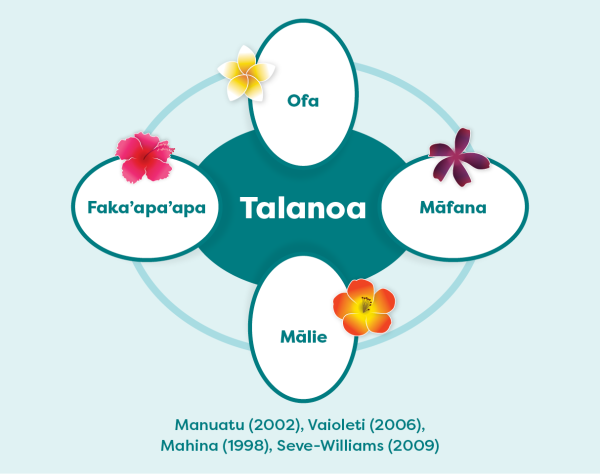
Download our talanoa mai cards to recognise and apply practices that support and strengthen the fau.
O mo’omo’oga ma mana’oga ausia | Our aspirations and outcomes
The questions we had were:
• What do successful transitions look like, sound like, and feel like from the perspectives of Pacific āiga?
• From a Pacific worldview, what is the fau and what does this look like for children transitioning from A’oga Amata (Pacific ELS) to English-medium schools?
• From a Pacific worldview, what is the fau and what does this look like for Pacific children transitioning from English-medium ELS to English-medium schools?
• How can the fau be strengthened to ensure children’s transitions are successful?
• What can ELS and primary teachers do to ensure the fau is strong for all Pacific children and their āiga?
Watch these videos
Ready to start your journey?
Suitable for āiga, primary school kaiako and early childhood kaiako, we invite you to download these resources to use in your setting:
Thanks to our funding partner


